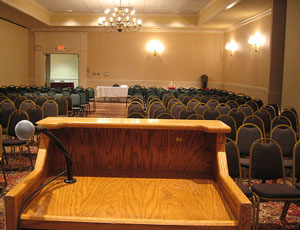I recently ran across a candidate who described himself as a “seasoned leader.” What’s the difference between a senior leader and a seasoned leader, I wondered, so I Google-d and Wikipedia-d and Yahoo-d and LinkedIn my way to this definition:
Seasoned leaders have tenure and clout and gravitas and a broad range of experiences in different industries, geographies and situations. Seasoned leaders are more well rounded because they have perspectives not yet formed in senior leaders. The next stage in the development of a senior leader is to become a seasoned leader. Seasoned leaders and senior leaders alike can certainly be thought leaders.
Of course, it wasn’t easy to ”define definitively” what a seasoned leader is and does. And the term ”seasoned” itself could be misinterpreted. The problem is that a “seasoned” leader could refer to any season – how confusing is that! If you think about what those seasons represent, you might want to steer clear of describing yourself in that way. I’m not sure all four types of seasoned leaders can be considered complimentary.
For example, the description of a “Spring” seasoned leader seems to be contradictory. If leaders are fresh and spouting – or sprouting – new ideas, they can’t be seasoned, can they?
“Summer” seasoned leaders, I would then assume, are in the prime of their lives and careers. They’re sowing in rich, fertile soil in their companies and making hay – or moula – while the sun is shining on their careers.
“Fall” seasoned leaders are clearly not British or they would be “autumn” seasoned leaders, right? But the connotation of that season – fall or autumn – is that things are dying and falling and decaying. It seems to imply that things are ending and winding down as far as the leader’s career is concerned.
Finally, the term “Winter” seasoned leaders would seem to imply that the leaders are used up, dormant, hibernating or dead. That’s not a very appealing description of someone with great experience and honed skills of leadership, is it?
Are you a seasoned leader? What season of seasoned leader are you? Ask, assess, then act. We’re here to help!
 Ahhhh, the Annual General Meeting (AGM). The Chairman’s Office owns it. Legal runs it. Investor Relations designs it. Finance provides the figures. Communications and Marketing create the messages. What could possibly go wrong!
Ahhhh, the Annual General Meeting (AGM). The Chairman’s Office owns it. Legal runs it. Investor Relations designs it. Finance provides the figures. Communications and Marketing create the messages. What could possibly go wrong!







